The Salon
Introduction
Text-to-speech Audio
Salons, popular amongst the wealthy in the early 20th century, offered a sense of intellect and refinement within one's home. Unlike the living room, used mostly by the family for relaxation, the salon would have been used for hosting guests and encouraging conversation. Designed in the Louis XVI style, Corinthian Hall's salon was the most extensively embellished room on the first floor. However, due to redecoration that occurred throughout the 1900s, the Salon served as one of the most difficult rooms to restore. Sconces that were original to the room were reinstalled, wall and ceiling ornamentation was restored, and the color of the walls were returned to their original cream color. Many of the original furnishings from the salon were donated to the Museum in 1963, by Sally Long Ellis.
Images
A photo of the salon in one of the mirrors positioned on the side of the room
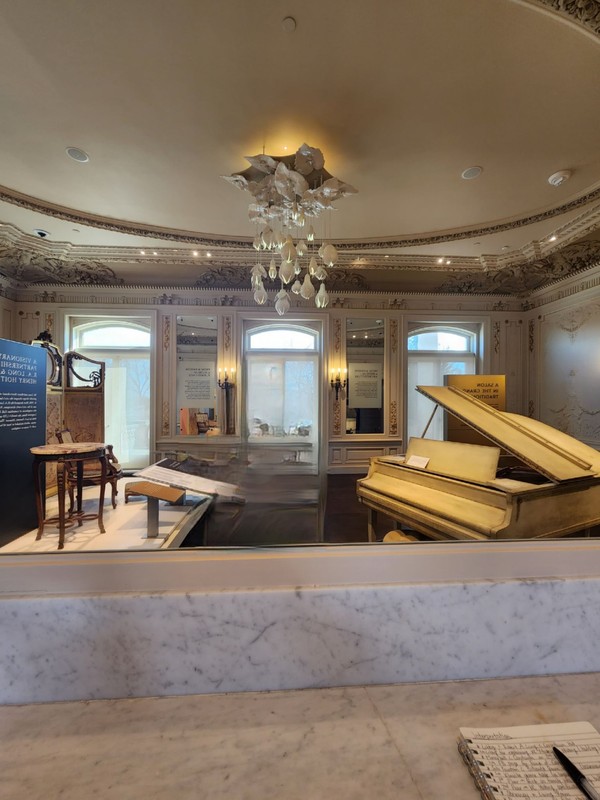
A side table featured in the Salon, one example of the many pieces of furniture featured in the space
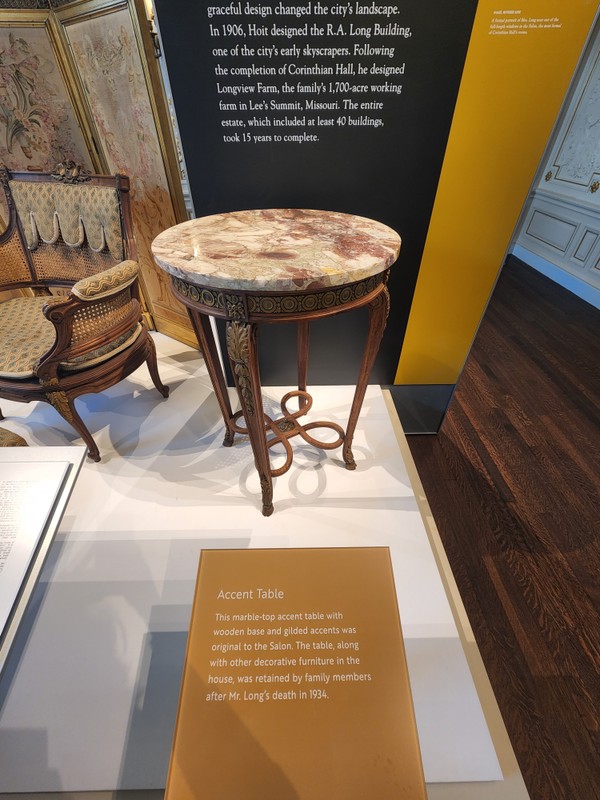
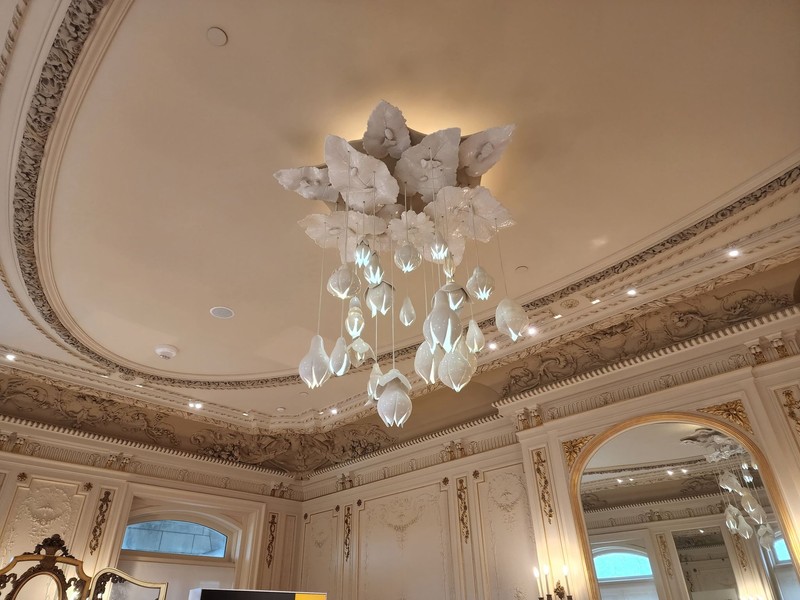
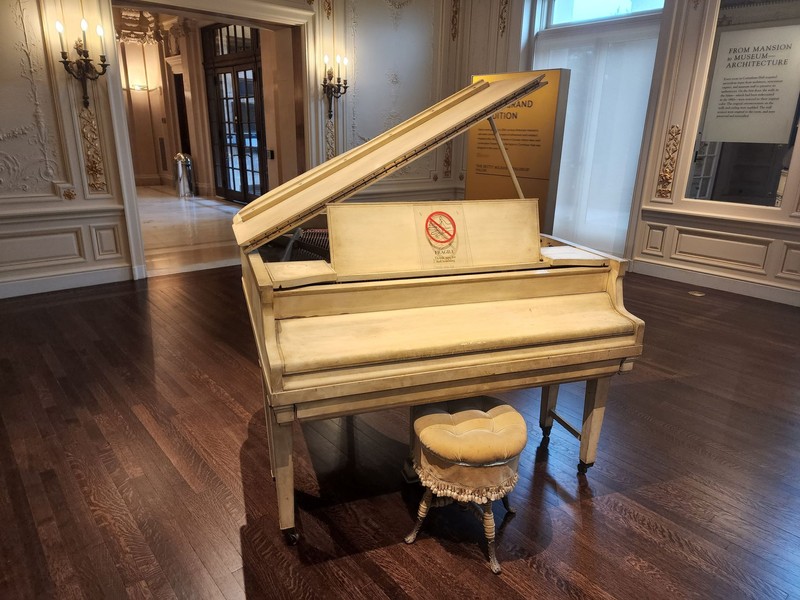
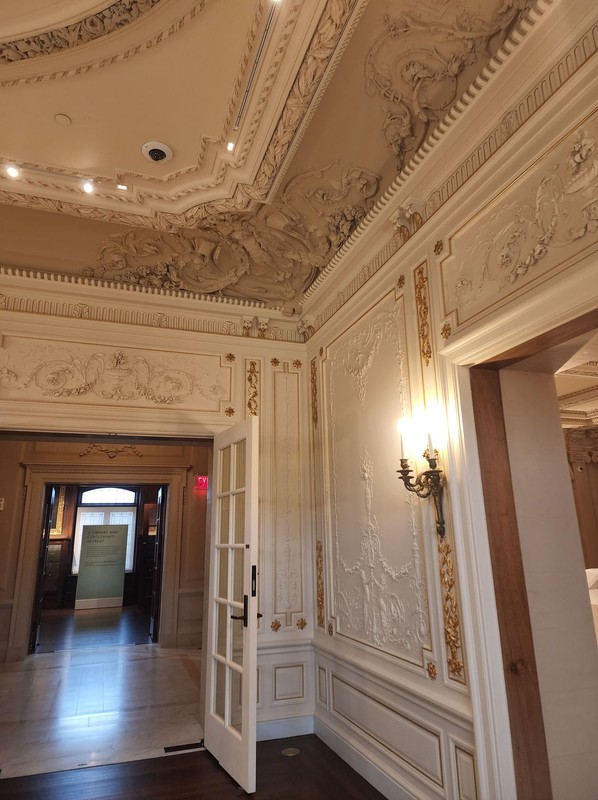
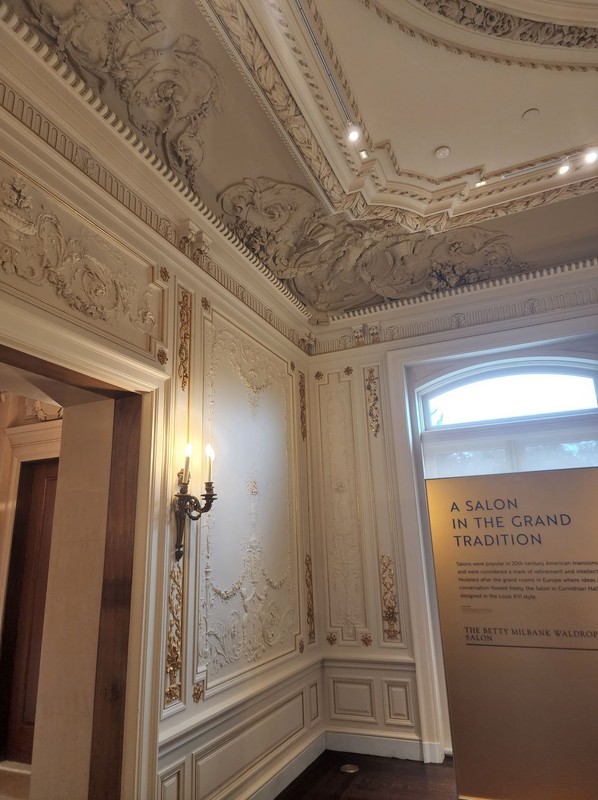
Backstory and Context
Text-to-speech Audio
Like the rest of Corinthian Hall, architect Henry Hoit designed the Salon while William Baumgarten furnished the space, and the salon served as one of the most heavily embellished rooms in the home. William Baumgarten and Company was well-known by wealthy families across the United States and thrived with numerous home commissions, including Cornelius Vanderbilt's mansion in Rhode Island. As the first producer of French Aubusson-style tapestries in the United States, Baumgarten offered luxurious items for mansions. The company closed in 1914, yet Baumgarten's legacy can be seen through the interior design of many early 20th century mansions.
On top of the interior design of Baumgarten, the Long family added their own decorative accents they acquired on their 1910 European Grand Tour. A bone china tea set from Vienna and a Eugen von Blaas painting in the living room are some examples, as well as the French candelabra and clock on the library's mantel. Within the salon, the porcelain tea set came from the family's time in Dresden, Germany, and was passed down to Sally Long's daughter, Lucia, who passed them to her son, Ted Uilein. The set was donated to the museum after spending decades with the family. An original marble-top accent table, although not from the Long's European ventures, is displayed in the salon, displaying embellishments the functional furniture had while the Long family occupied the home. As the salon would have been used for conversation, the exchange of ideas, and entertaining guests, a settee, floor screen, and foot stool original to the space have been returned to the salon, furnishings that were present during the home's prime. Additionally, a period William Knabe piano is displayed in the space to offer the forms of entertainment the Long family may have employed when they welcomed guests into their home. The original custom Steinway piano from the Salon is currently in the Living Room, maintained in playable condition and utilized for house concerts, etc.
The architect of Corinthian Hall, Henry Hoit, designed each room in a different style, following instructions provided by Mr. Long. Hoit served as the architect for many of Robert A. Long's projects, including the R.A. Long building, Corinthian Hall, and Longview Farm. Entering the Van Brunt and Howe architectural firm in 1901, Hoit was commissioned for many grand projects, including the Varied Industries Building for the 1904 World's Fair. Along with Mr. Long's projects, Hoit served as architect for other historic buildings in the Kansas City area, most notably the Kansas City Power & Light Building.
With Hoit's design, and Baumgarten's décor, the salon in Corinthian Hall became a lavishly decorated room in the Louis XVI style, meant to impress guests the moment they entered the room. The museum's restoration project has recaptured the style of the original salon. The gilt ornamentation on the walls and ceiling was restored, the walls repainted to match the original color, and wall sconces were reinstalled. Multiple wall-mirrors within the space provide extended views of the extravagant décor, offering patrons an immersive experience in the space while also providing opportunities for photos. The salon preserves the Louis XVI style as it was presented in the early 20th century, and promotes the legacy of both Hoit's and Baumgarten's talent.
Sources
- Kansas City Museum, 3218 Gladstone Blvd., Kansas City, MO, 64123 (accessed March 8, 2022). Wall Plaques: Wall text. A Salon in the Grand Tradition, Kansas City Museum, Kansas City, Missouri.
- Laffer, Christine, "Low Tech Transmission: European Tapestry to High Tech America" (2010). Textile Society of America Symposium Proceedings. 31. https://digitalcommons.unl.edu/tsaconf/31
